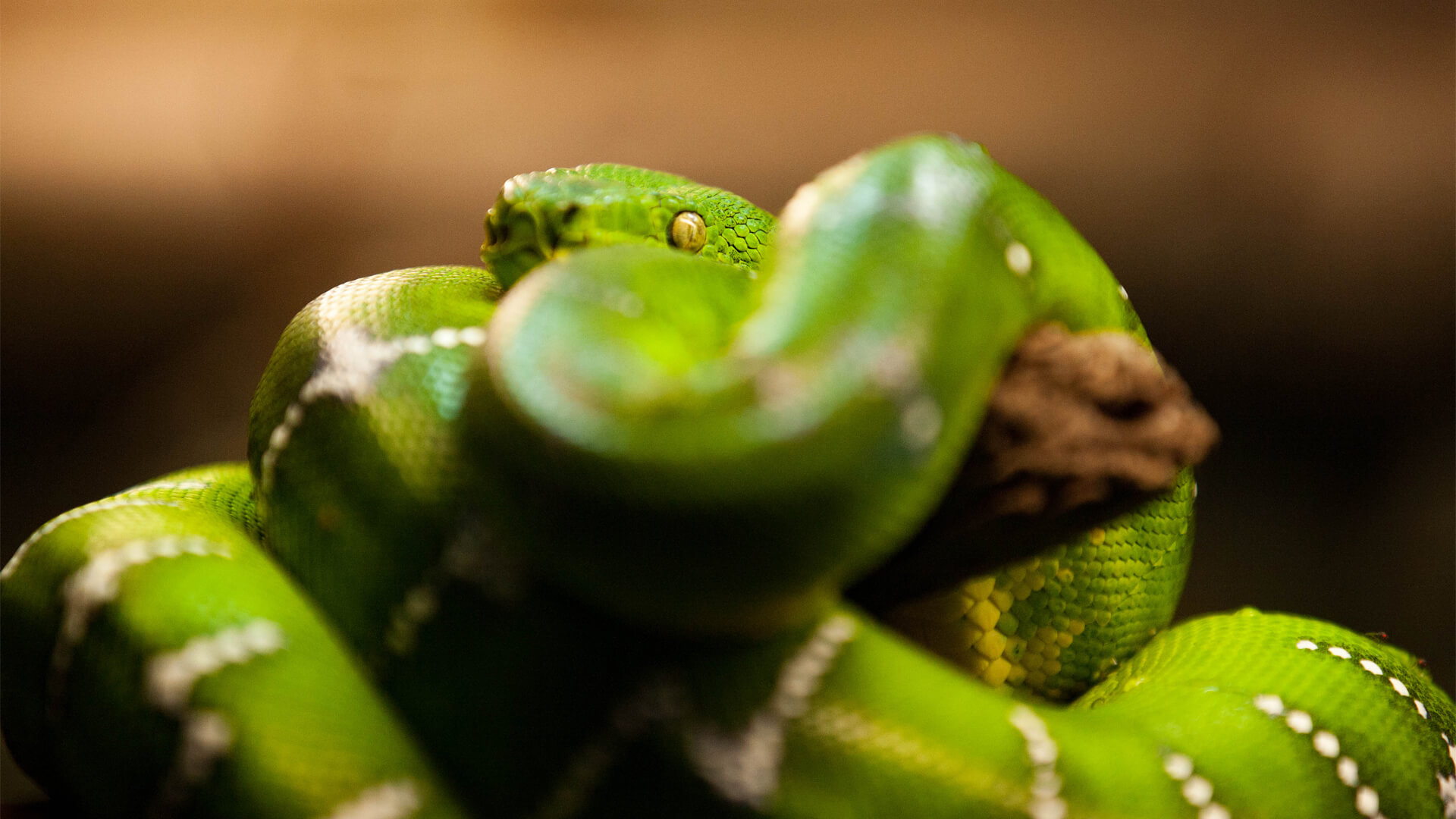
This bright green constrictor inhabits the tropical rainforests of South America. They are almost always found in the trees, coiled atop a branch and waiting patiently for prey.
Young emerald tree boas develop inside the female snake. They are born able to immediately slither and fend for themselves, requiring no maternal care. Young emerald tree boas are born red to yellow-orange in color, and turn green by their first birthday. Boas are constrictors, meaning they kill their prey by wrapping around it tightly. However, they do not kill their prey by crushing it as many believe. They simply wrap around so tight that the prey cannot breathe at all, and the prey then dies from suffocation.

The emerald tree boa has the longest teeth of any nonvenomous snake in the world. These teeth are used to penetrate the plumage of birds, their main food source.

Dave
Emerald tree boas have vertical eyelids, resembling a cat
Amazon Basin, from Venezuela to Brazil to northern Bolivia
Rainforest
4–9 feet | 2–4 pounds
Small mammals, birds, lizards, frogs
Young boas may be preyed upon.
Constriction, camouflage
oviviparous; 6–14 per litter
Least Concern
Up to 25 years
